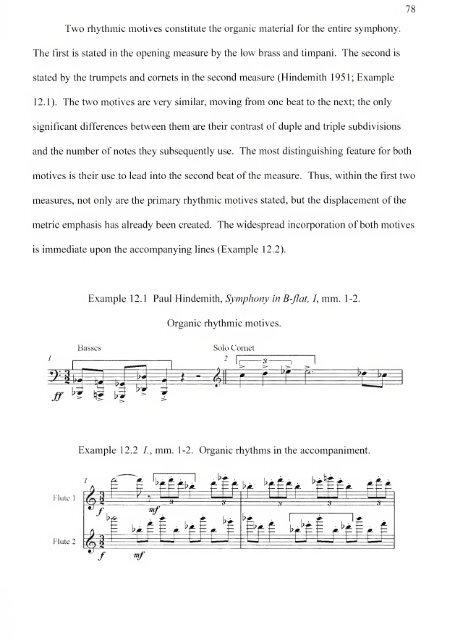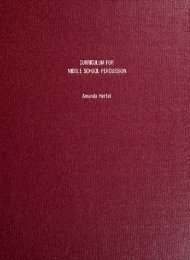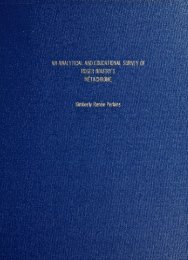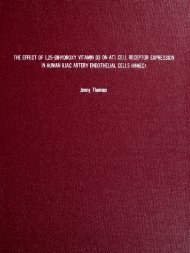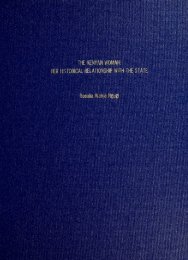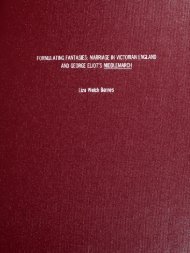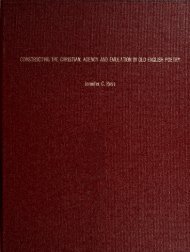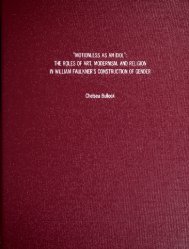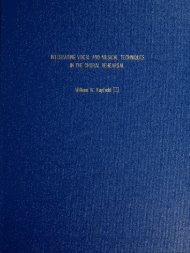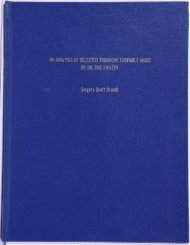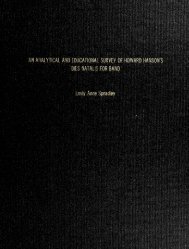The Study and Application of Rhythmic Analysis for Wind Band ...
The Study and Application of Rhythmic Analysis for Wind Band ...
The Study and Application of Rhythmic Analysis for Wind Band ...
You also want an ePaper? Increase the reach of your titles
YUMPU automatically turns print PDFs into web optimized ePapers that Google loves.
1 1i7KTwo rhythmic motives constitute the organic material <strong>for</strong> the entire symphony.<strong>The</strong> first is stated in the opening measure by the low brass <strong>and</strong> timpani. <strong>The</strong> second isstated by the trumpets <strong>and</strong> cornets in the second measure (Hindemith 1951; Example12.1). <strong>The</strong> two motives are very similar, moving from one beat to the next; the onlysignificant differences between them are their contrast <strong>of</strong> duple <strong>and</strong> triple subdivisions<strong>and</strong> the number <strong>of</strong> notes they subsequently use.<strong>The</strong> most distinguishing feature <strong>for</strong> bothmotives is their use to lead into the second beat <strong>of</strong> the measure.Thus, within the first twomeasures, not only are the primary rhythmic motives stated, but the displacement <strong>of</strong> themetric emphasis has already been created.<strong>The</strong> widespread incorporation <strong>of</strong> both motivesis immediate upon the accompanying lines (Example 12.2).Example 12.1 Paul Hindemith, Symphony in B-flat, I, mm. 1-2.Organic rhythmic motives./Bas.ff * tf* l>i1 HSolo Comet/— ~ 'c 1 7^Example 12.2 /., mm. 1-2. Organic rhythms in the accompaniment./ *»/


